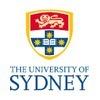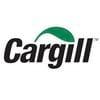I. INTRODUCTION
It has been shown that FP occurs in all housing systems, from conventional cages, to barn and free range systems (Green et al., 2000). However, there is a lack of data available on the true prevalence of FP in commercial free-range layer farms in Australia. In a survey in the UK, 65% of flocks showed FP during lay as reported by free-range farmers but, when the same flocks were assessed by researchers, prevalence reached 89% and 69% at 25 weeks, and 73% and 86% at 40 weeks for gentle and severe FP, respectively (Lambton et al., 2010). The aetiology of FP is multifactorial and not completely understood, despite extensive research. FP has been proposed to be due to a complex relationship involving genetic and environmental factors (Hartcher et al., 2016; Rodenburg et al., 2013). Included in environmental factors are nutrients in feed and feeding management. FP has been theorised to be redirected foraging and feeding behaviour (Hartcher et al., 2016) and is exacerbated by nutrient deficiencies (Ambrosen and Petersen, 1997; Kjaer and Bessei, 2013). The objective of the study was to determine the prevalence and severity of PD attributed to FP in free range layer farms in Australia and to identify the nutritional factors associated with its occurrence.
II. MATERIALS AND METHODS
A cross-sectional study was conducted on 15 free range layer farms selected from a list generated by an online survey. A sampling frame was created to include farms that had consented to further contact by researchers. Farms were selected based on their location (South Australia (6), Queensland (2), New South Wales (5), and Victoria (2)); number of birds on farm (7 small (200-7,000 hens), 4 medium (14,000-37,000 hens) and 4 large farms (50,000-300,000 hens); age of birds (34-80 wks); and housing styles (fixed sheds/mobile caravan style sheds) to capture the most diverse practices and demographics. On-farm visits involved generating data on husbandry practices using a questionnaire. Feed samples were collected from silos for analysis to determine dry matter percentage, gross energy, crude protein percentage and levels of calcium, phosphorous and sodium. Excreta samples were used to calculate apparent metabolisable energy.
Two researchers simultaneously recorded PD on all farms, each selecting five areas randomly in the same shed and visually assessing plumage damage on a group of about 50 birds before they were let out on the range for the day. Scores were based on the severity of damage (with a value of 4 for severe, 3 for moderate, 2 for slight, and 1 for no damage) and were scored for six body locations individually (neck, breast, back, wing, tail and cloaca) (Lambton et al., 2010). It was assumed that all PD was caused by FP except that on neck which can also be due to mechanical damage (Assurewel, 2014). A visual assessment was used to estimate the percentage of flock affected. Data from the two researchers was collated and PD scores across each body location were averaged to obtain final estimates. PD scores for this study were calculated by multiplying the percentage of plumage damage in the body location by the above mentioned factor of severity (nil, slight, moderate and severe). The values were summated to come to a total with the highest possible value as 400, and lowest as 100. Overall prevalence of PD was calculated by dividing the number of farms affected by PD by the total number of farms. The percentage of flock displaying PD to each body location scored was also calculated.
Data were subjected to least square analysis using JMP Pro v11.0 (SAS Institute, Cary, NC, USA) to determine the effect of different nutritional practices and feed nutrients on average and individual body location PD scores. Mean values were reported along with the SEM and compared using Tukey’s HSD (considered significantly different at P< 0.05).
III. RESULTS AND DISCUSSION
Plumage damage (PD) attributed to feather pecking was observed in all but one farm. An average of 33% of hens in a flock were affected by PD (Figure 1).
Figure 1 - Average proportion of hens in a flock showing plumage damage at different severity levels as observed on fifteen free range farms.

Of the different body locations assessed, tail had the highest plumage damage at 70% followed by 36%, 34%, 27%, 20% and 12% for back, neck, cloaca, breast and wing, respectively (Figure 2). The highest mean feather pecking score was seen for the tail (213 ± 19) and the lowest for wing (115 ± 8). A similar finding was reported by Petek et al. (2015) where feather score of the tail region was significantly greater than in the other body locations. Since PD on the head and neck indicate either aggressive pecking to maintain the dominance hierarchy or mechanical damage (Assurewel, 2014), the observed plumage damage on the tail, back and cloaca in this study is more likely a result of feather pecking than abrasive and mechanical causes. The significance of cloacal feather loss relates to its association with vent pecking and cannibalism (Lambton, 2015; McAdie et al., 2005). Also, due to the increased risk of wound contamination from faecal matter and the environment, feather loss and damage to the integrity of the skin in the cloacal region can result in septicaemia and death (Lambton et al., 2015).
Figure 2 - Prevalence and severity of plumage damage (PD) for six different body locations as observed on fifteen free range farms.
Pelleted feed was used by 40% of farms and consistently showed higher average PD scores (169 ± 11) compared to mash feed (132 ± 8) (P = 0.02), which is in agreement with previous studies (Lambton, 2010; Lindberg and Nicol, 1994).
In the present study, the lowest PD scores were observed on farms that fed crude protein levels between 15-16% (108 ± 13) (P = 0.01). Both very low and high CP levels, as compared to the recommended levels, showed increase in the incidence of PD. Earlier studies have shown that low protein diets can have detrimental effects on feather pecking behaviour (Kjaer and Bessie, 2013, Gerum and Kirchgessner, 1978). While Ambrosen and Petersen (1997) showed that no further significant improvement in plumage condition could be obtained beyond 15.2% CP in feed, the increased PD scores with increasing CP levels seen in this study could be related to the age of the bird since it was farms with older flocks that showed this trend. Moisture content of feed ranged from 6.9% to 11.2% and did not show any significant association to PD.
Gross energy of feed had a significant effect (P=0.01) on PD scores with higher levels associated with higher PD scores. The recommended level for ME is between 11.7-12.0 MJ/kg (Leeson and Summer, 2005). Metabolisable energy (ME) ranged between 10.4 and 12.7 MJ/kg on farms. A significant association of ME levels and PD could not be demonstrated; however, farms with feed that had ME ranging between 11-12 MJ/kg consistently had the highest PD scores, with a mean score of 168±10. Gerum and Kirchgessner (1978) have also reported that broilers fed diets with increasing energy levels of ME showed an increase in feather eating.
Table 1 - Effect of nutritional factors on plumage damage (PD) in laying hens.

No farms had calcium levels within the recommended range of 4.2-4.6% (Leeson and Summers, 2005), with 13 farms below and two farms above this range (between 0.4 - 6.7%). The recommended level of sodium and phosphorous is 0.15-0.17% and 0.3-0.5%, respectively (Leeson and Summer, 2005) and feed analysis identified a range of 0.02-0.22% and 0.2-0.7% respectively. Higher FP scores were recorded for both deficient and above recommended levels of Ca (P=0.01), Na (P=0.41) and P (P=0.02). Hughes and Woodgush (1973) reported calcium deficiency increased locomotor and general pecking activity termed ‘exploratory’ behaviour in chickens. Similar effects were reported for sodium deficiency in laying hens (Bessei, 1978). Thus it could be concluded that nutritional deficiencies had a stimulating effect on activity and exploratory behaviour leading to FP. However, it was also observed that levels above the recommended range for these nutrients resulted in the higher feather pecking scores. This effect could be attributed to the fact that, when the feed contains adequate levels of all nutrients and a surplus of certain specific nutrients, the time required for feed intake is reduced. The mismatch between the spontaneous activity for feed-related behaviours (pecking, scratching, locomotion), and the actual time required for feeding is considered a cause of feather pecking (Baum, 1995).
In conclusion, 33% of hens in a flock showed PD, with the tail showing the highest and the wing the lowest of all body locations scored. Providing mash rather than pelleted feed provides an easy implementable strategy which has been shown in the present and previous studies to have an effect on plumage damage. Feed analysis indicated great variability in the levels of nutritional components in the feed. Comparison to recommended levels revealed that none of the feeds adhered to suggested levels for calcium; however feather pecking scores increased with increasing calcium levels. Feather pecking scores were the lowest when diets were within the recommended range for CP%, sodium and phosphorus. This epidemiological study helped to identify dietary nutrient and nutritional management factors that may be implemented on free range laying farms to reduce the prevalence of plumage damage in hens. Other studies looking at a bigger sample size and including practices of pullet rearing and early lay will be useful in developing mitigation strategies to reduce PD in hens.
Presented at the 29th Annual Australian Poultry Science Symposium 2018. For information on the latest and future editions, click here. 


















